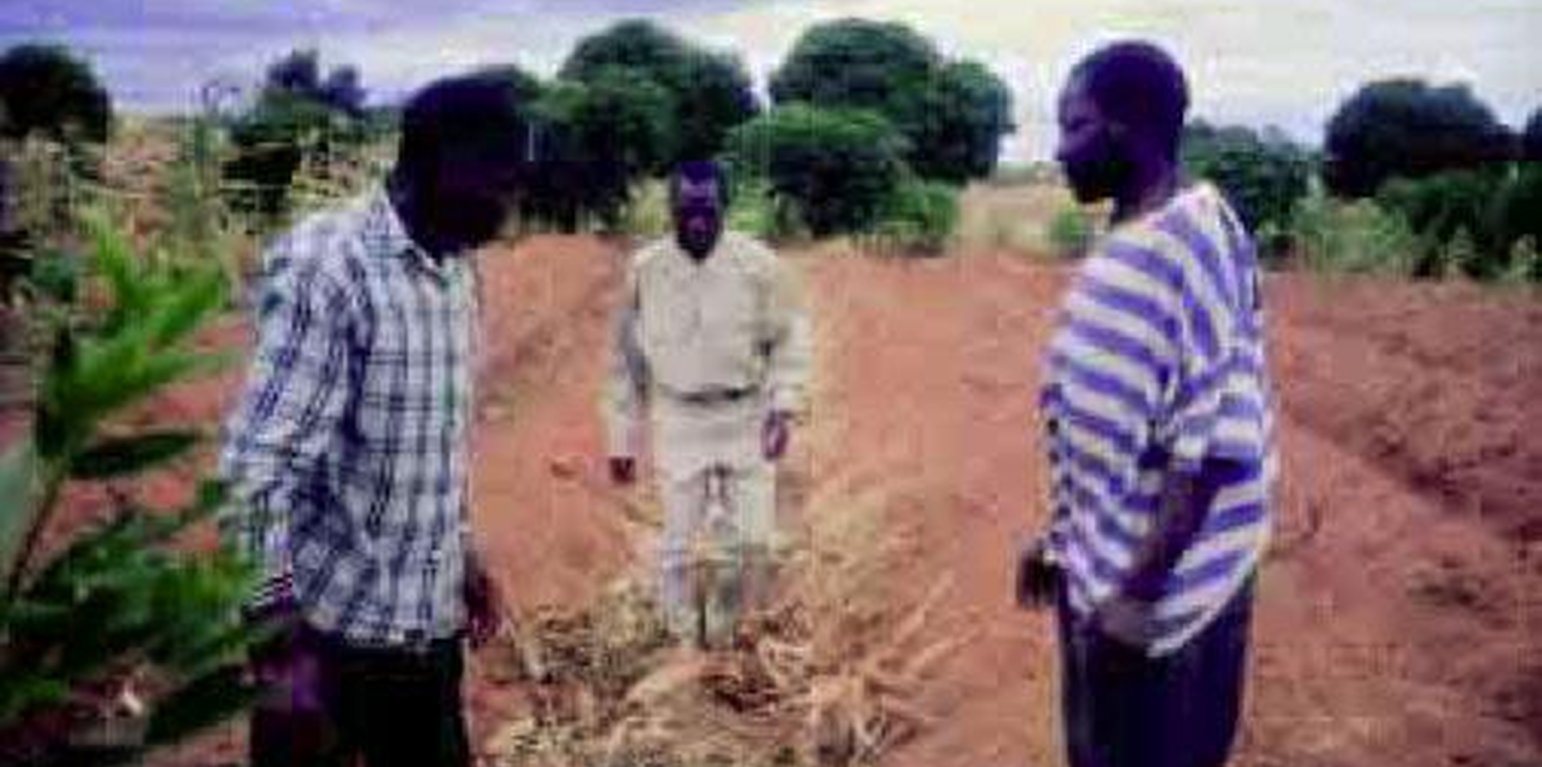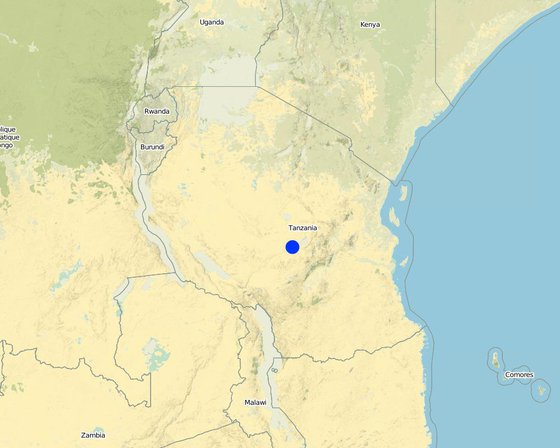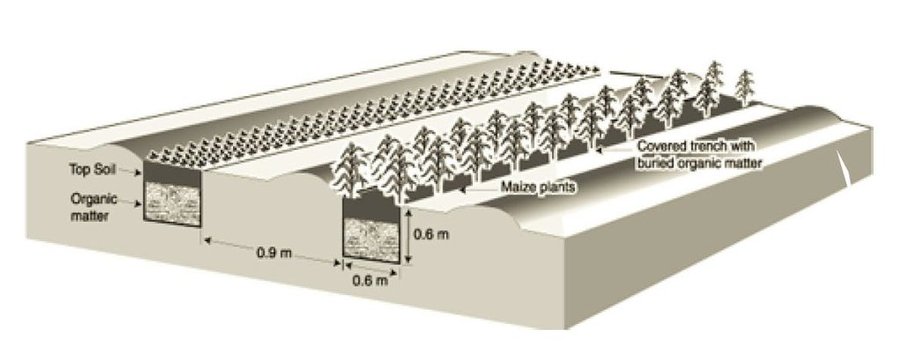



The system is based on trench cultivation. This involves excavation of trenches 0.6 m deep and 0.6 m wide, more or less across the slope, at a spacing of 0.9 m apart, edge to edge. The trenches are dug in the dry period, then filled with crop residues, grass and other organic trash, and finally back-filled with soil.
The surface is deliberately left some centimetres below ground level so that it can capture runoff. Associated with the trenching, a furrow to harvest rainwater is formed to lead water into the field from outside, and an end bund in the field is built up to prevent its loss. Between trenches a leguminous crop such as groundnuts is grown, while maize, sweet potatoes and tomatoes are grown on the trenches. In the first year, the farmer plants at the sides of the trench to avoid damage to crop roots by the heat generated by decomposition. Thereafter crops are planted in the middle. In years of good rainfall it is possible to grow an opportunistic second crop, making use of stored soil moisture. After four years the trench is re-dug, filled with organic matter, and the cycle begins. Further additions/ improvements to the system (which is
constantly evolving) are (i) the addition of cattle urine and waste water from the household to hasten decomposition of grass materials; and (ii) mulching between the trenches with crop stover at the end of the season.
Purpose of the Technology: The technology comprises a structural measure, dedicated to improvement of the land for annual cropping. In respect to soil and water conservation it primarily addresses soil fertility and soil moisture problems. It achieves impact through increasing organic matter and water stored in the soil. Ecological benefits include increase in soil moisture, improved soil fertility and protection of the land from surface erosion.
Establishment / maintenance activities and inputs: The land was completely bare before the technology and is now productive. Compared with neighbouring farms yields are estimated to be at least 50% higher, and the farmer considers the benefits to be ‘very positive’ in relation to the costs. This is reflected in his increased farm income. Those cost, however, are estimated at around 400 person days per hectare for initial establishment.
Natural / human environment: This technology was designed by a retired agricultural field agent on his 3 ha of land. The importance of this particular innovation lies in the fact that the originator has mixed and matched tradition and modern practices to tailor-make a system that suits his own situation.

Location: Dodoma rural, Dodoma, Tanzania, United Republic of
No. of Technology sites analysed:
Spread of the Technology: evenly spread over an area (approx. 10-100 km2)
In a permanently protected area?:
Date of implementation: less than 10 years ago (recently)
Type of introduction







| Specify input | Unit | Quantity | Costs per Unit (n.a.) | Total costs per input (n.a.) | % of costs borne by land users |
| Labour | |||||
| Labour | persons/day/ha | 417.0 | 1.9 | 792.3 | 100.0 |
| Equipment | |||||
| Tools | ha | 1.0 | 8.5 | 8.5 | 100.0 |
| Plant material | |||||
| Seeds | ha | 1.0 | 7.5 | 7.5 | 100.0 |
| Total costs for establishment of the Technology | 808.3 | ||||
| Total costs for establishment of the Technology in USD | 808.3 | ||||
| Specify input | Unit | Quantity | Costs per Unit (n.a.) | Total costs per input (n.a.) | % of costs borne by land users |
| Labour | |||||
| Labour | persons/day/ha | 139.0 | 1.9 | 264.1 | 100.0 |
| Equipment | |||||
| Tools | ha | 1.0 | 8.5 | 8.5 | 100.0 |
| Plant material | |||||
| Seeds | ha | 1.0 | 7.5 | 7.5 | 100.0 |
| Total costs for maintenance of the Technology | 280.1 | ||||
| Total costs for maintenance of the Technology in USD | 280.1 | ||||